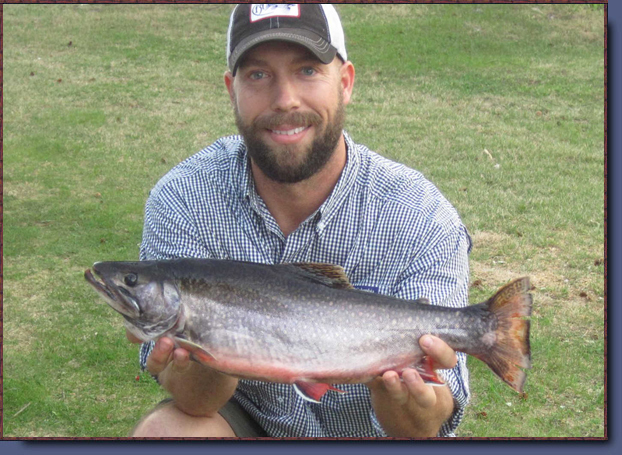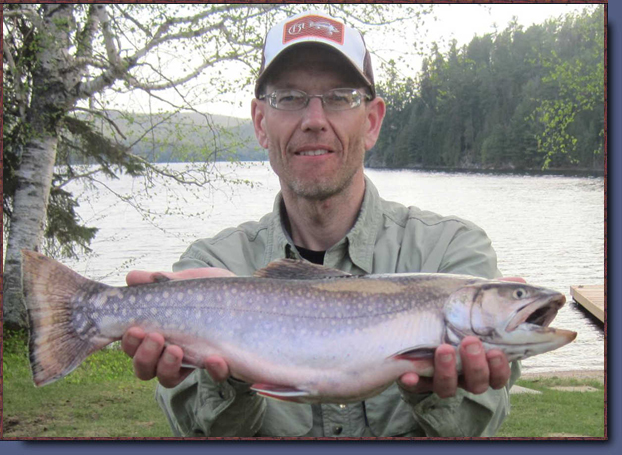Brook Trout Fishing Tips:
Fragile, moody and easily spooked brook trout present one of the more challenging fishing opportunities. Success, measured in catches of rare, beautiful and tasty fish come to the fishermen who exercise patience and persistence.
|
Brook trout are normally caught by spin casting or still fishing. A light weight flexible rod with spin-casting or spinning reel and never more than 6-pound test line is ideal. A variety of small artificial lures (not more than 2 inches long) including gold and silver spoons or spinners are good.
|

|
The old standby silver spinner with a couple of split shots for weight and a small hook baited with a part of a worm is illustrated. Brook trout can be frightened by large presentations such as big plugs or even large wads of worm embedded on a hook and these should be avoided.
In lake environments, brook trout are normally caught in 10 to 30 feet of water usually in sheltered bays or along sections of shoreline where submerged boulders and fallen trees provide cover. The fisherman needs to approach these areas with a minimum of disturbance, wait a little and then begin fishing. Try a technique of casting toward shore or along the shore followed by slow and partial retrieval of the bait allowing the bait to slowly sink to a near vertical position before reeling in. If you are using worms, each cast can evolve into a brief episode of still-fishing or gentle jigging.

Brook trout tend to be active during brief periods and it is not uncommon for all of the action to occur in a half hour interval during the day or evening. Here, persistence is the key to success. Brook trout also go crazy during fly hatches and at these times the fly fisherman gets all the action. Fly hatches normally occur in late May and June but the precise timing and intensity of the hatches are difficult to predict from one year to the next with the result that it is hard to plan a fly-fishing trip coincident with a hatch.

Fishing for brook trout in streams requires the same light tackle as that recommended for lake fishing. In addition, the stream fisherman requires a light pack for his spare tackle and bait and a pair of old sneakers to carry him down the river bed, over gravel bars and through brush on the banks. Brookies prefer to remain under cover in streams such as in white-water pools, under submerged logs or along banks. The fisherman needs to approach these places cautiously, indeed with stealth and to entice the trout by casting a tasty tidbit of worm close as possible to the hiding place. He may be rewarded by the sight of a fleeting shadow in the water and a tug on his line. Unfortunately, these hiding places are normally festooned with overhanging branches and submerged obstacles so slightly misplaced casts result in a snag. These are the joys and tribulations of stream fishing.
|

